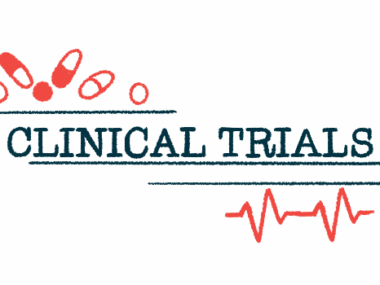Personalized Mekinist dosing may be needed for kids with glioma
Study suggests more research on optimizing treatment's use in children
Written by |

Personalized dosing and monitoring of drug levels may be necessary for children with low-grade glioma treated with Mekinist (trametinib), according to a study.
The study, “Real-world pharmacokinetics of trametinib in pediatric low-grade glioma,” was published in Cancer Chemotherapy and Pharmacology.
Low-grade gliomas, or LGGs, are a type of slow-growing brain tumor originating in the glial cells, which support and protect neurons in the brain. These are the most common solid tumors in children.
Although surgery can be curative in some cases, more than 70% of patients require additional treatment because the tumor’s location often prevents complete removal, the researchers noted.
Mekinist is an approved treatment for LGG in patients ages 1 and older whose cancer carries a mutation called RAF V600E. The oral therapy works to block the activity of MEK1 and MEK2, two enzymes involved in the growth of certain cancer cells. The name-brand therapy is sold by Novartis, which was not involved in the study.
Dosage based on body weight
In children with LGG, Mekinist is dosed based on body weight. However, there isn’t much data on the therapy’s pharmacokinetics, or how the drug moves in, through, and out of the body.
To address this gap in knowledge, scientists in France conducted pharmacokinetic analyses for 19 children with LGG who received Mekinist. Some of the children were also treated with Tafinlar (dabrafenib), another LGG treatment that’s often used in combination with Mekinist.
“The aim of our study was to characterize [Mekinist pharmacokinetics’] exposure in children with LGG in a real-world setting,” the researchers wrote.
A total of 65 blood samples were collected from the 19 children. In about two-thirds of these samples, levels of Mekinist in the blood were within the range that’s thought to be needed for the therapy to be effective. But in 35.4% of the samples, drug levels were below this range.
“Despite adherence to the recommended dosage, many patients exhibited suboptimal drug concentrations,” the researchers wrote. The team said these data emphasize “the need for [therapeutic drug monitoring] and personalized dosing strategies” for children receiving Mekinist.
Efficacy data were available for 10 of the 19 patients. In most cases, the patients had stable disease, meaning the cancer did not grow or shrink. Two of the children experienced a partial response, meaning the tumor got smaller, and one experienced disease progression in which the tumor got larger.
The most common side effects of Mekinist treatment in these children were skin problems such as dry skin or inflammation of the skin around fingernails. One child experienced severe skin issues that led to an interruption in treatment. Other reported side effects included digestive complaints and weakness.
Three children required dose reductions because of side effects, and two stopped treatment due to safety issues. Statistical analyses did not show a clear relationship between pharmacokinetic parameters and safety outcomes.
The scientists said the study highlights a need for more research on how best to use Mekinist in children so that the drug’s efficacy can be maximized while minimizing the risk of safety problems.
“This study contributes valuable data to the limited body of literature on [Mekinist] use in pediatric oncology, paving the way for further research aimed at optimizing treatment outcomes through individualized therapy,” the researchers wrote.







